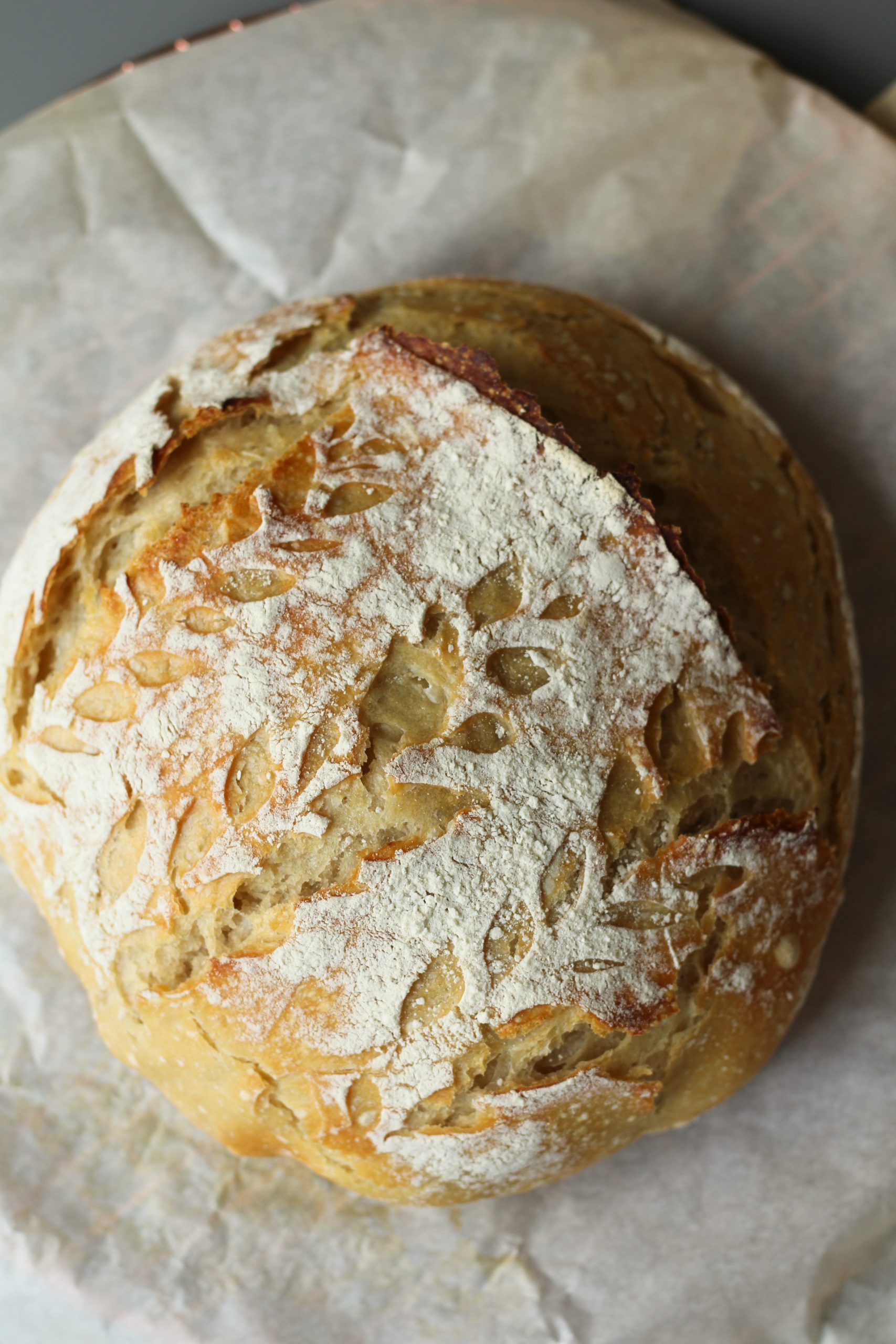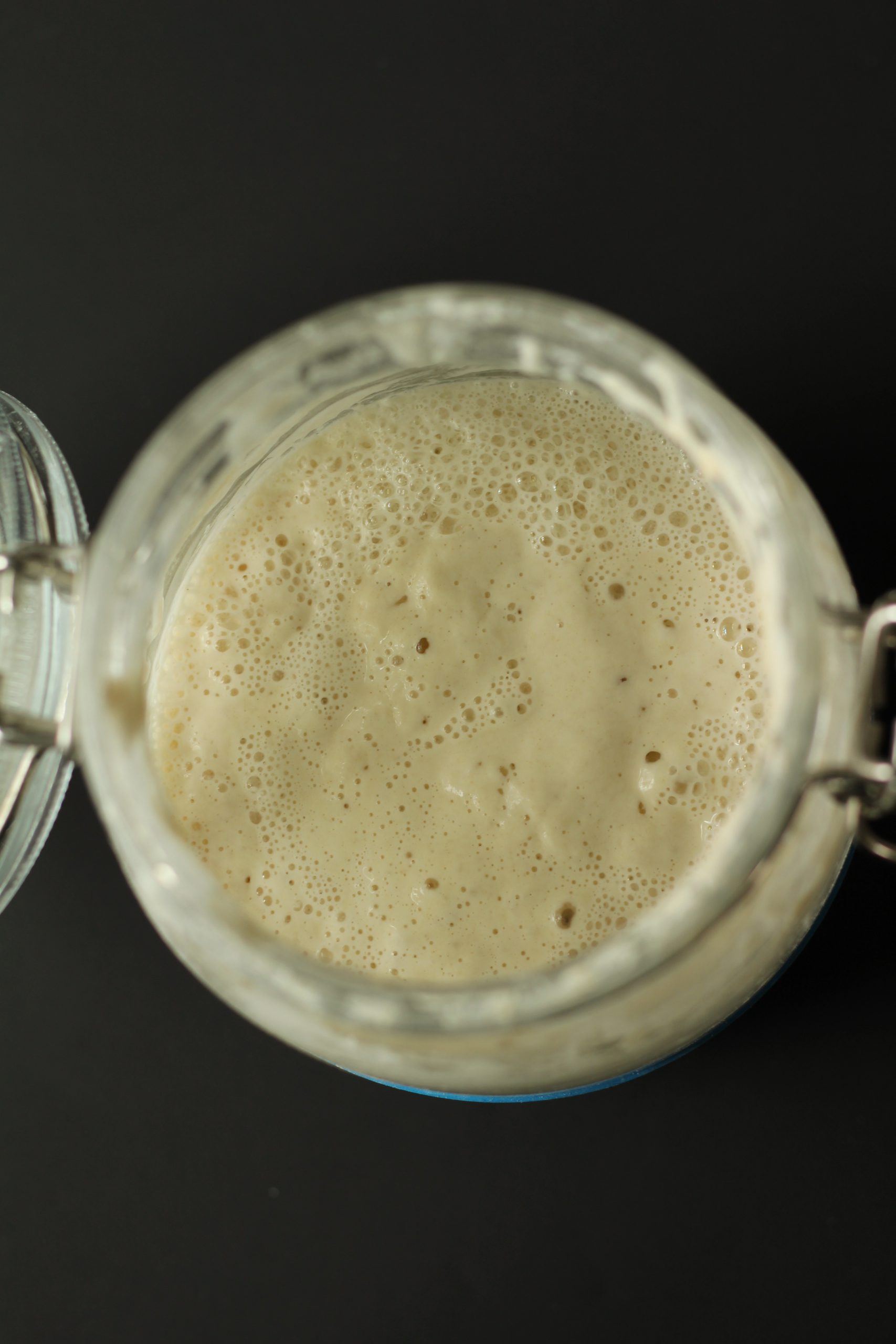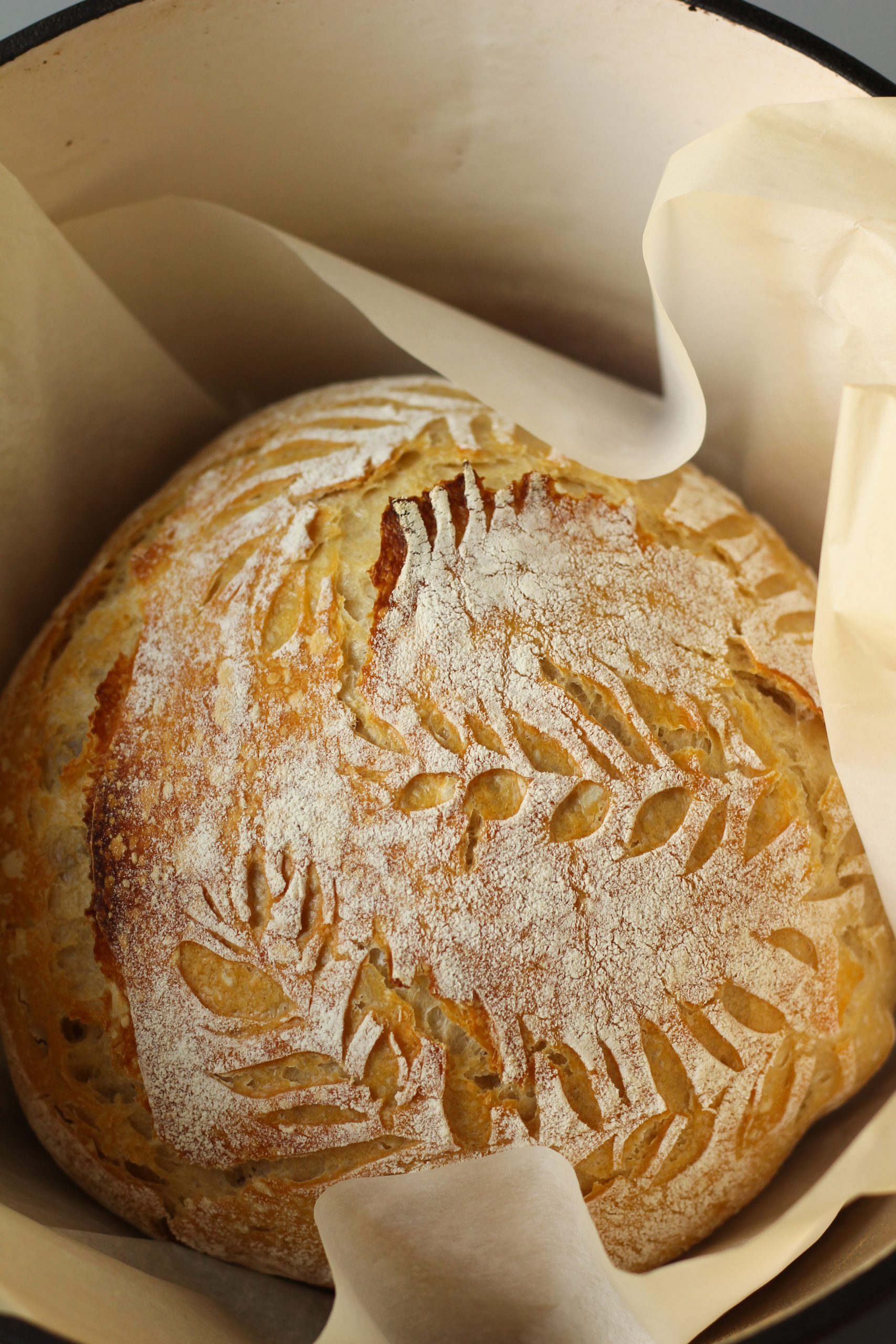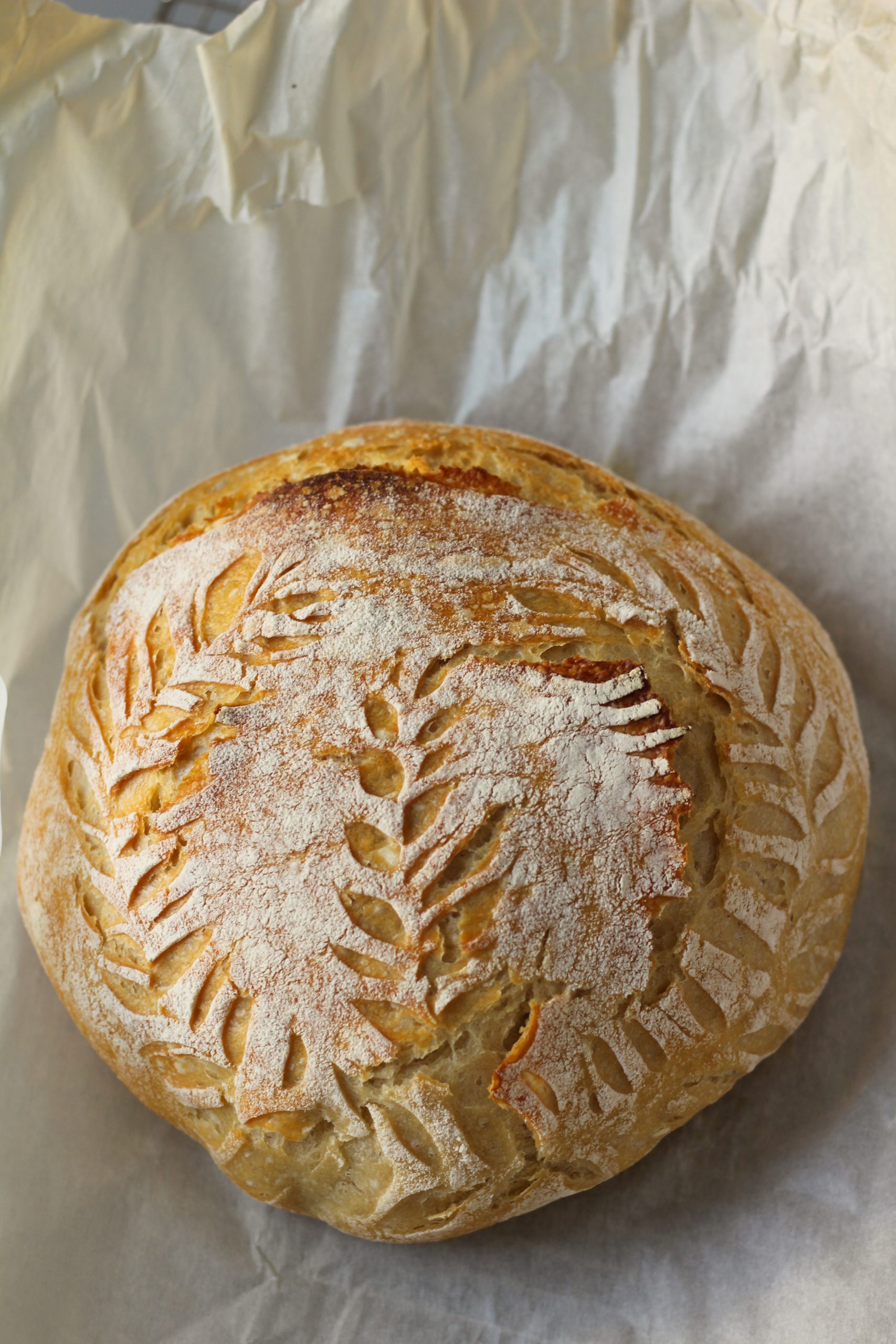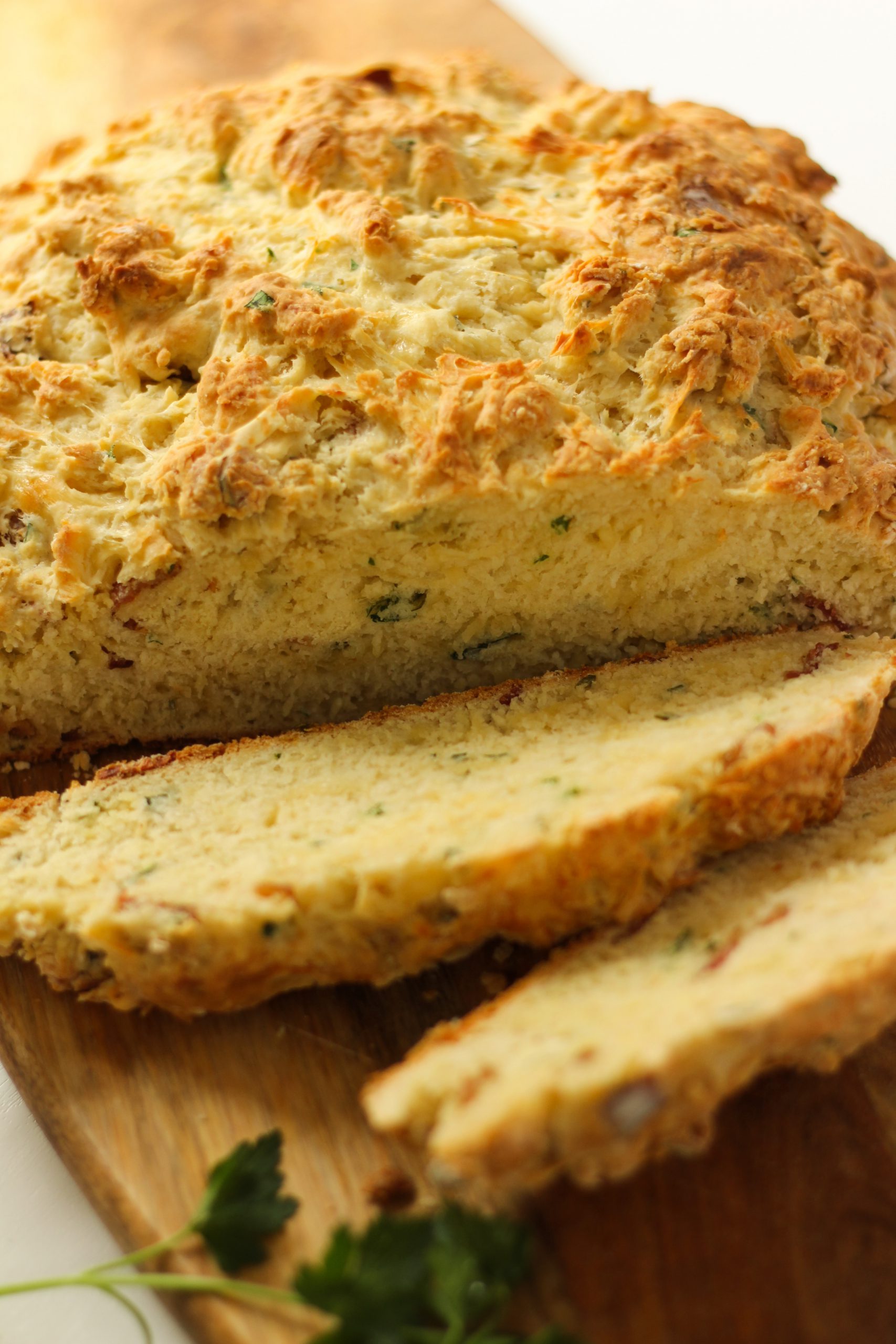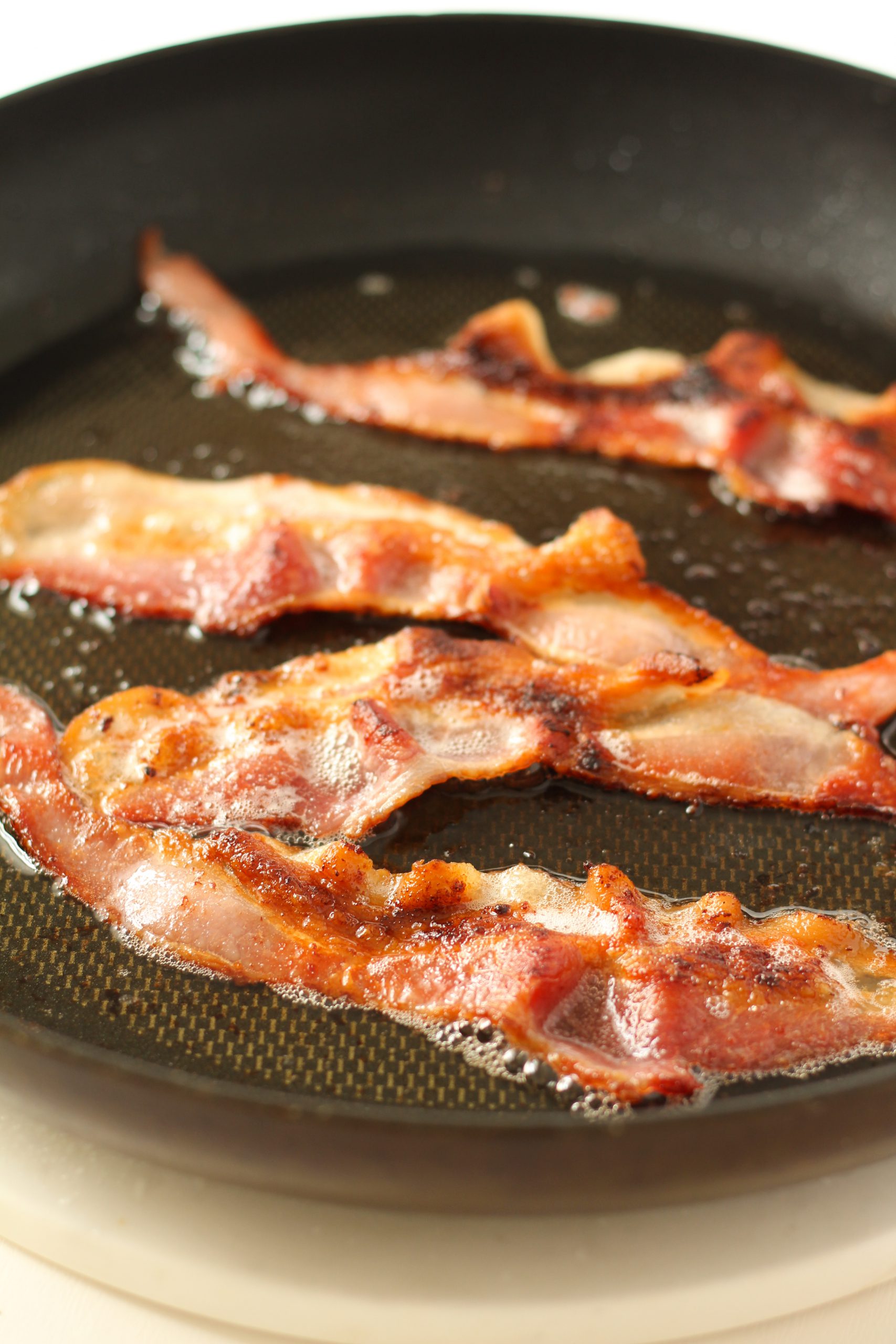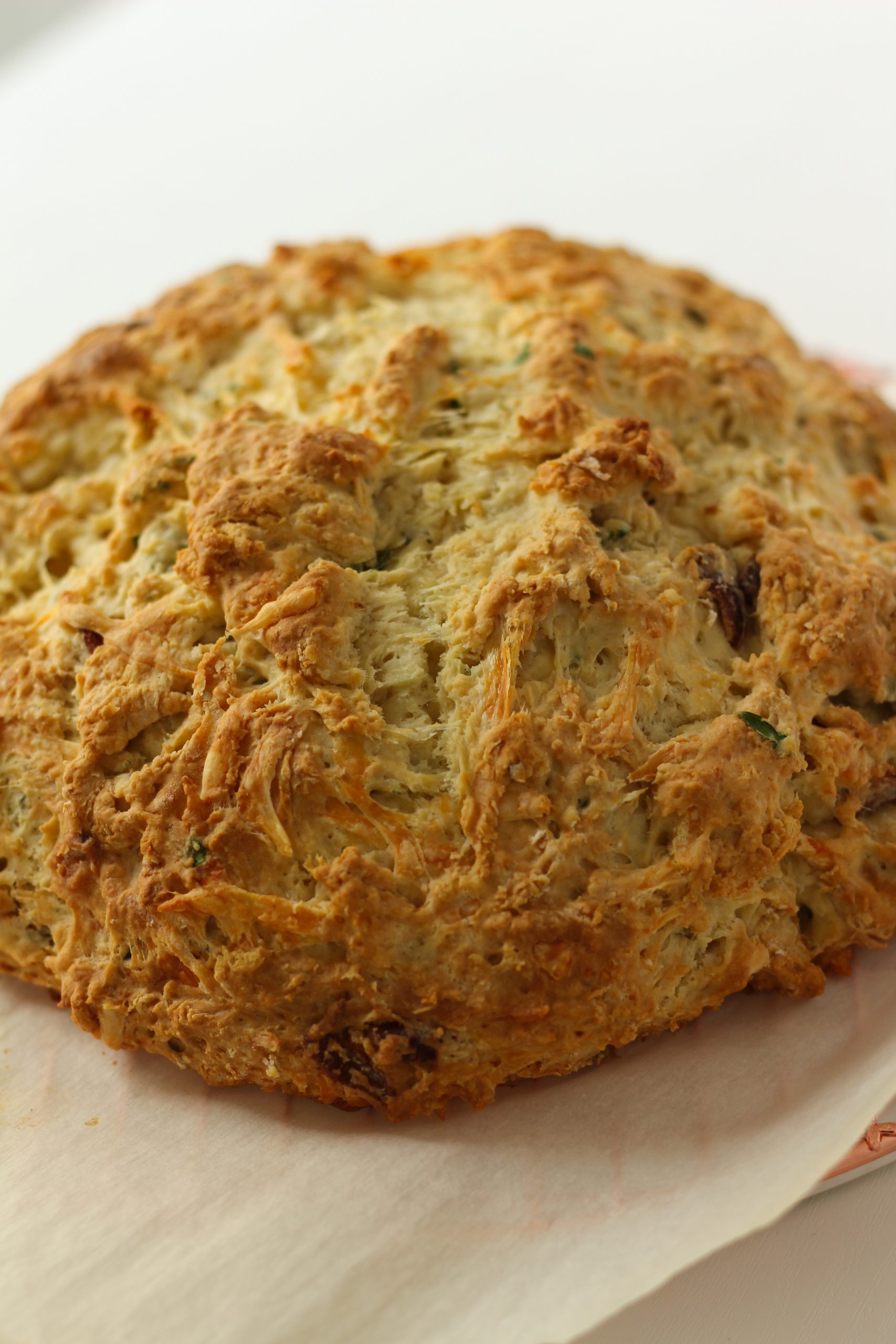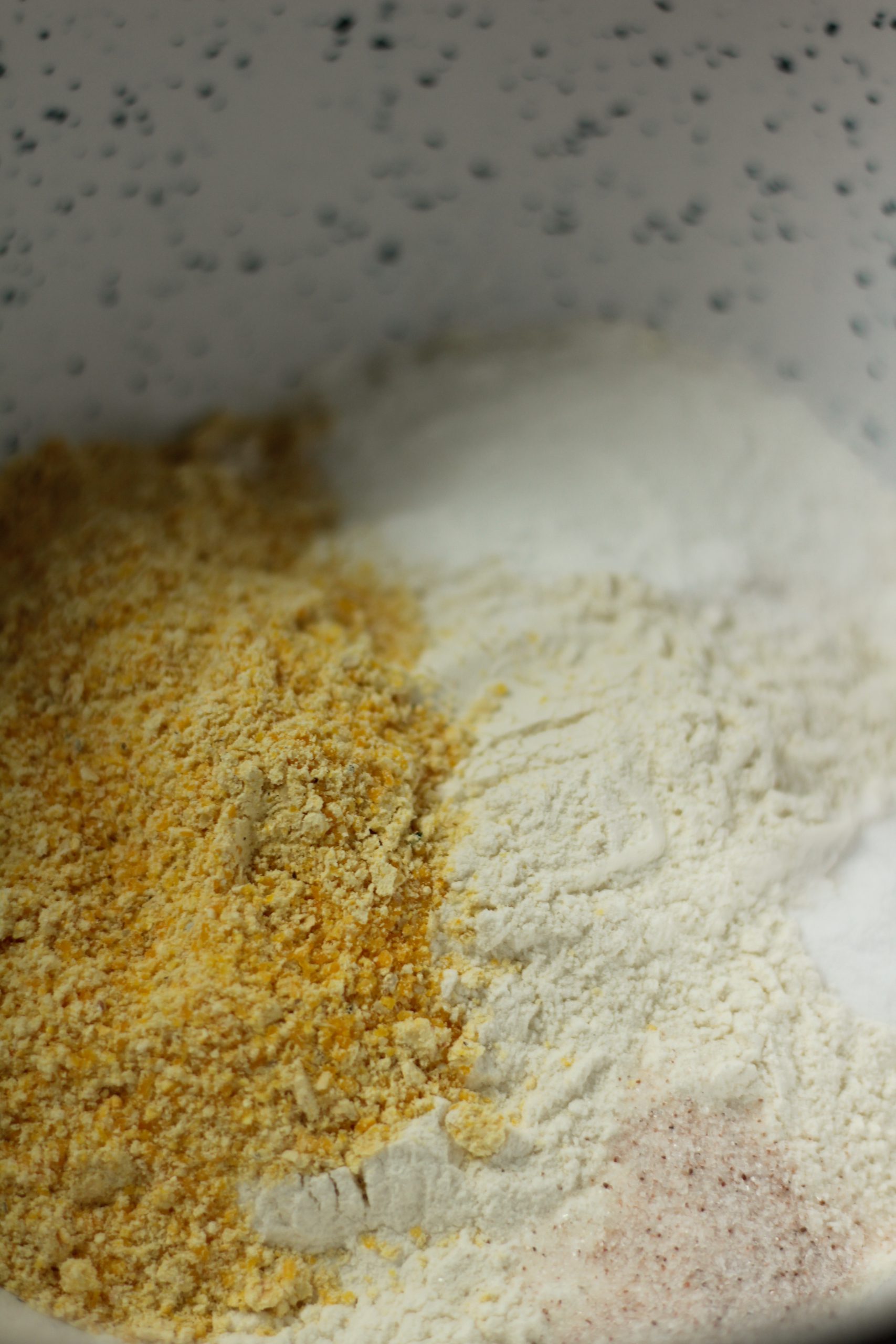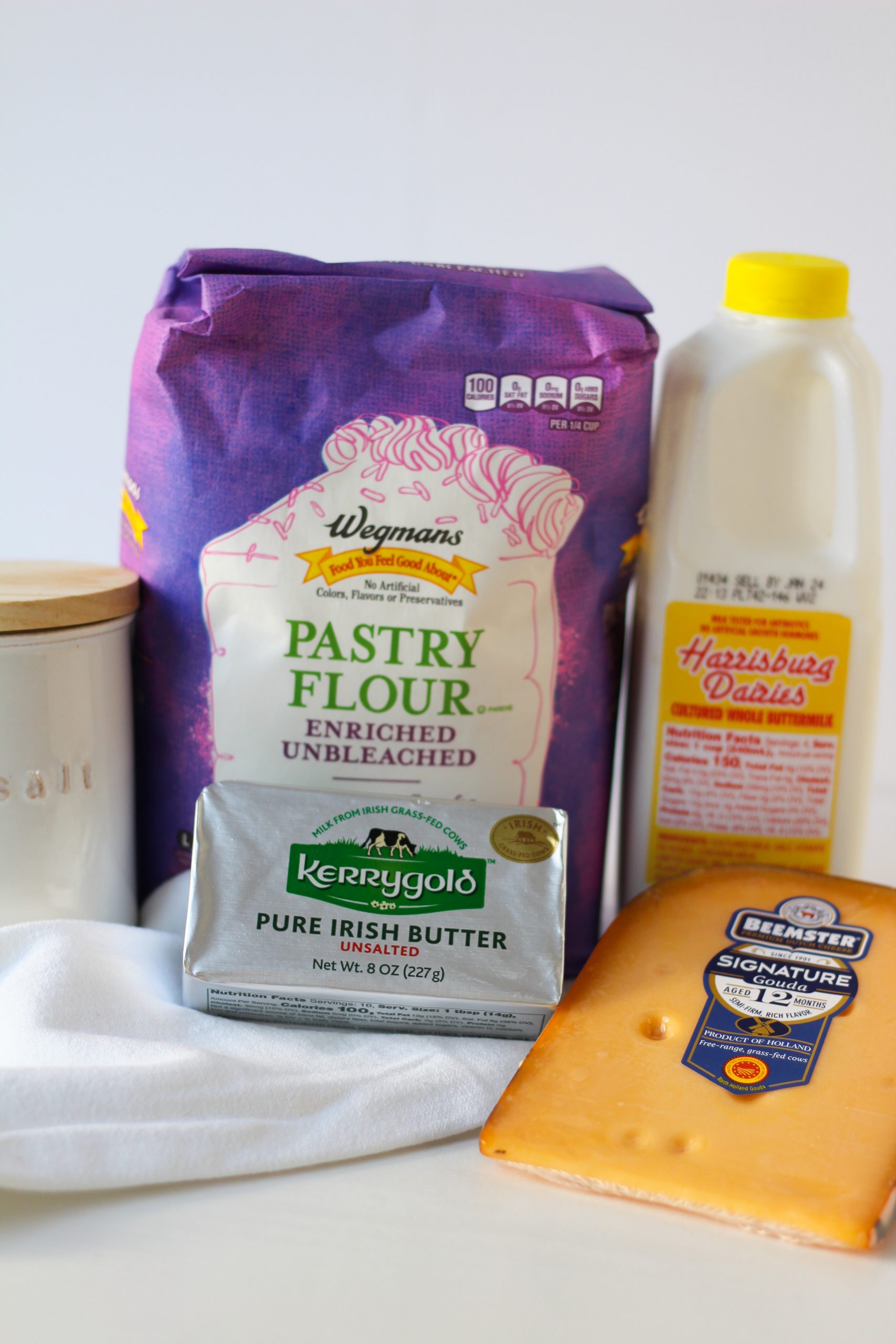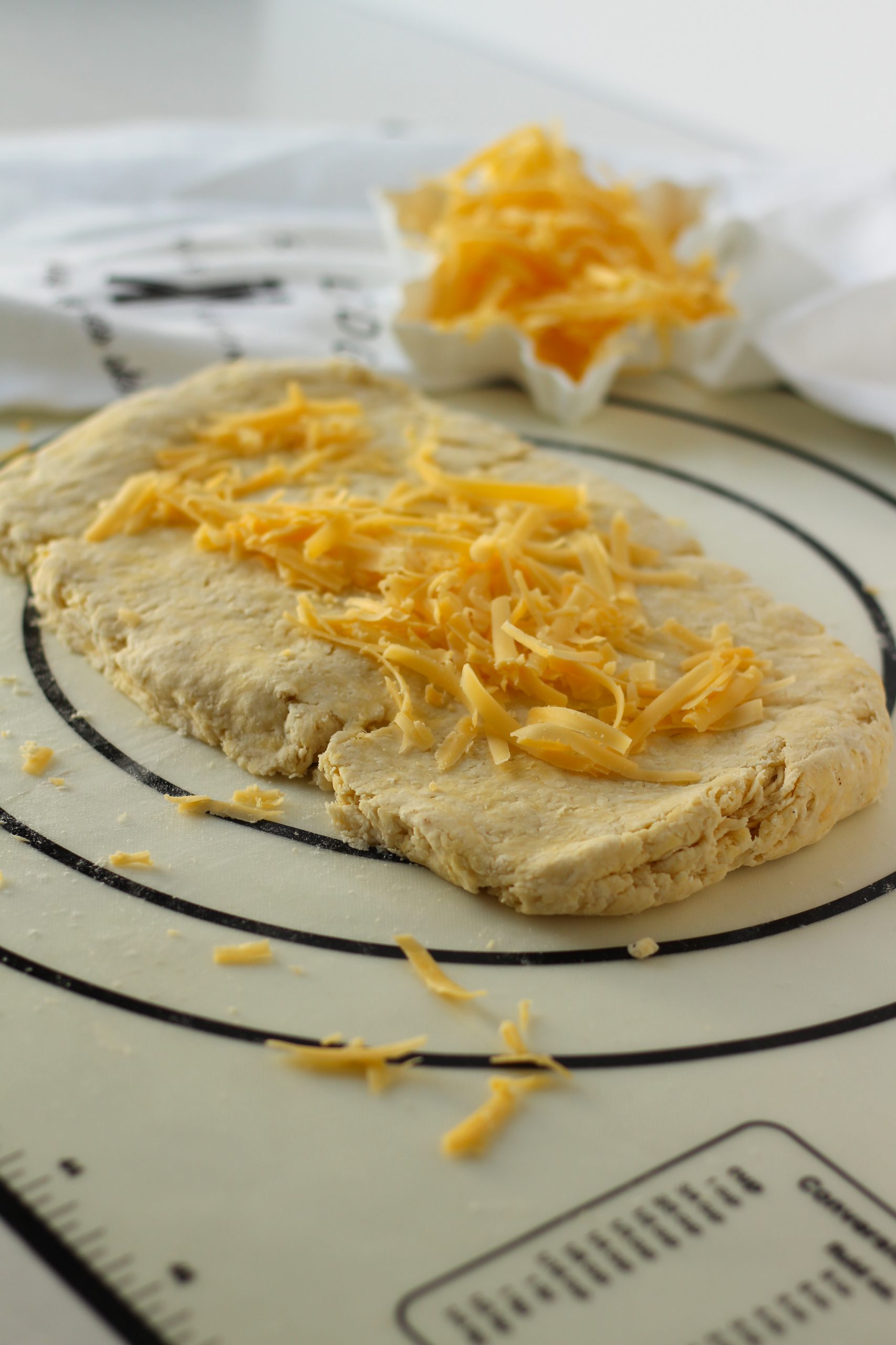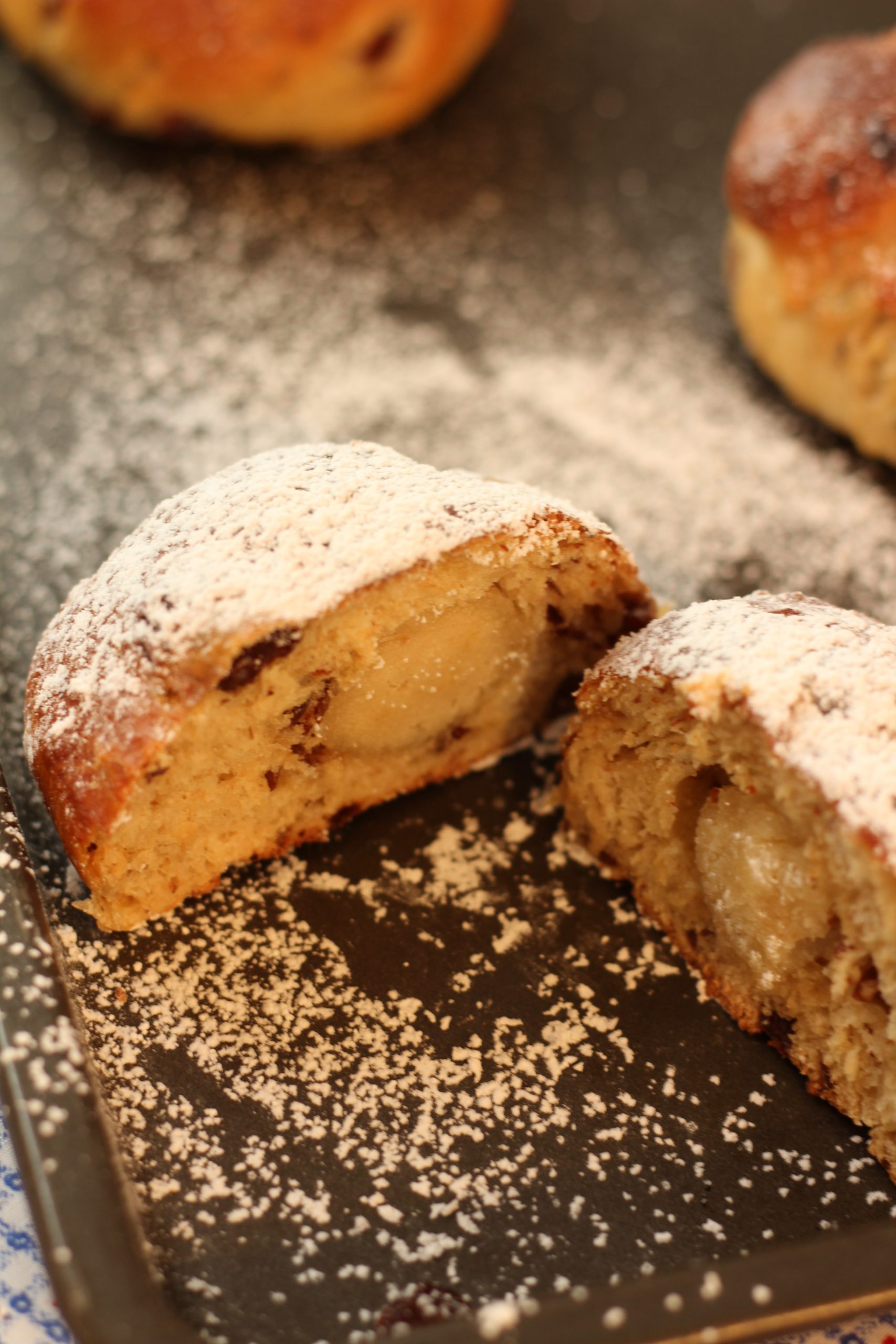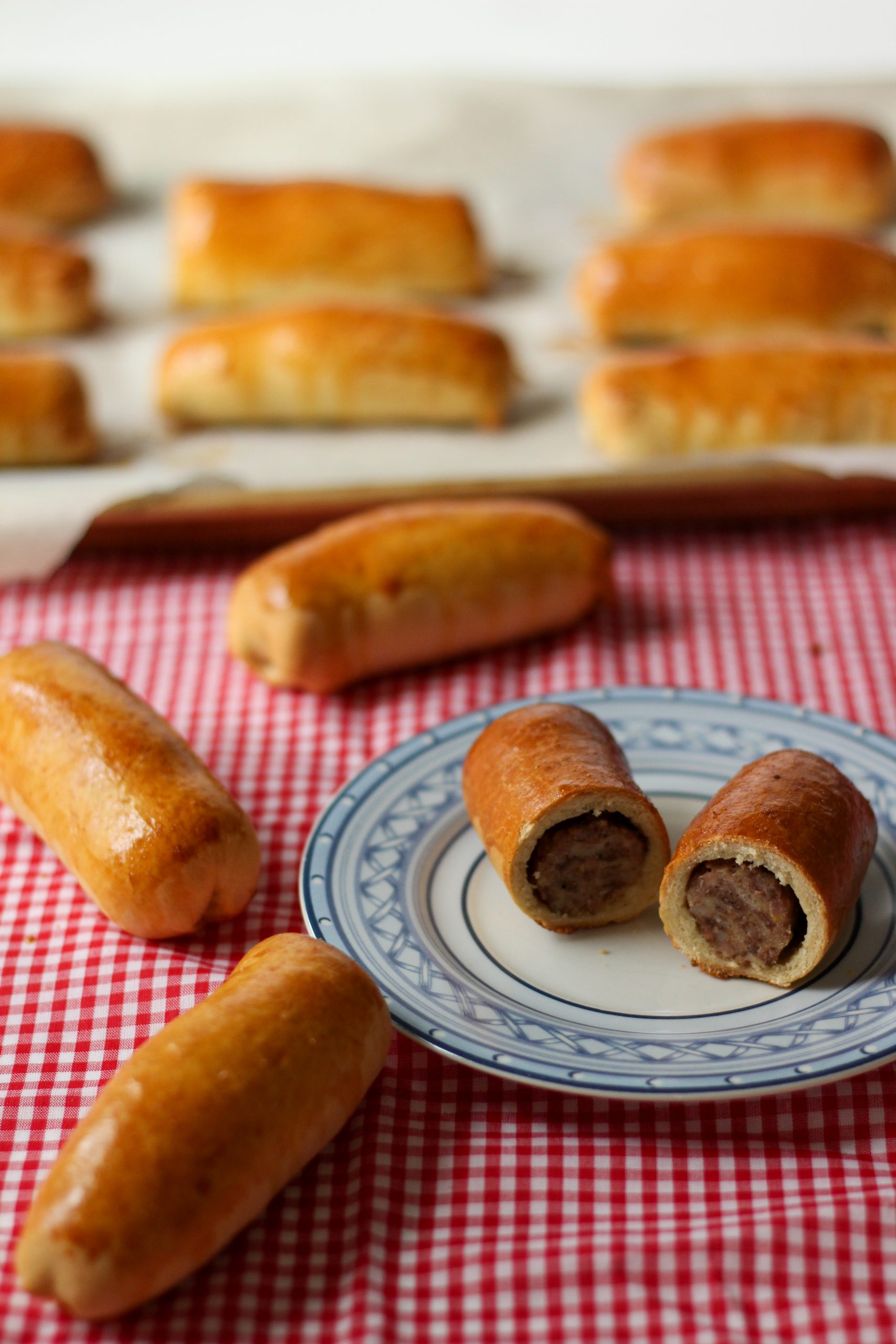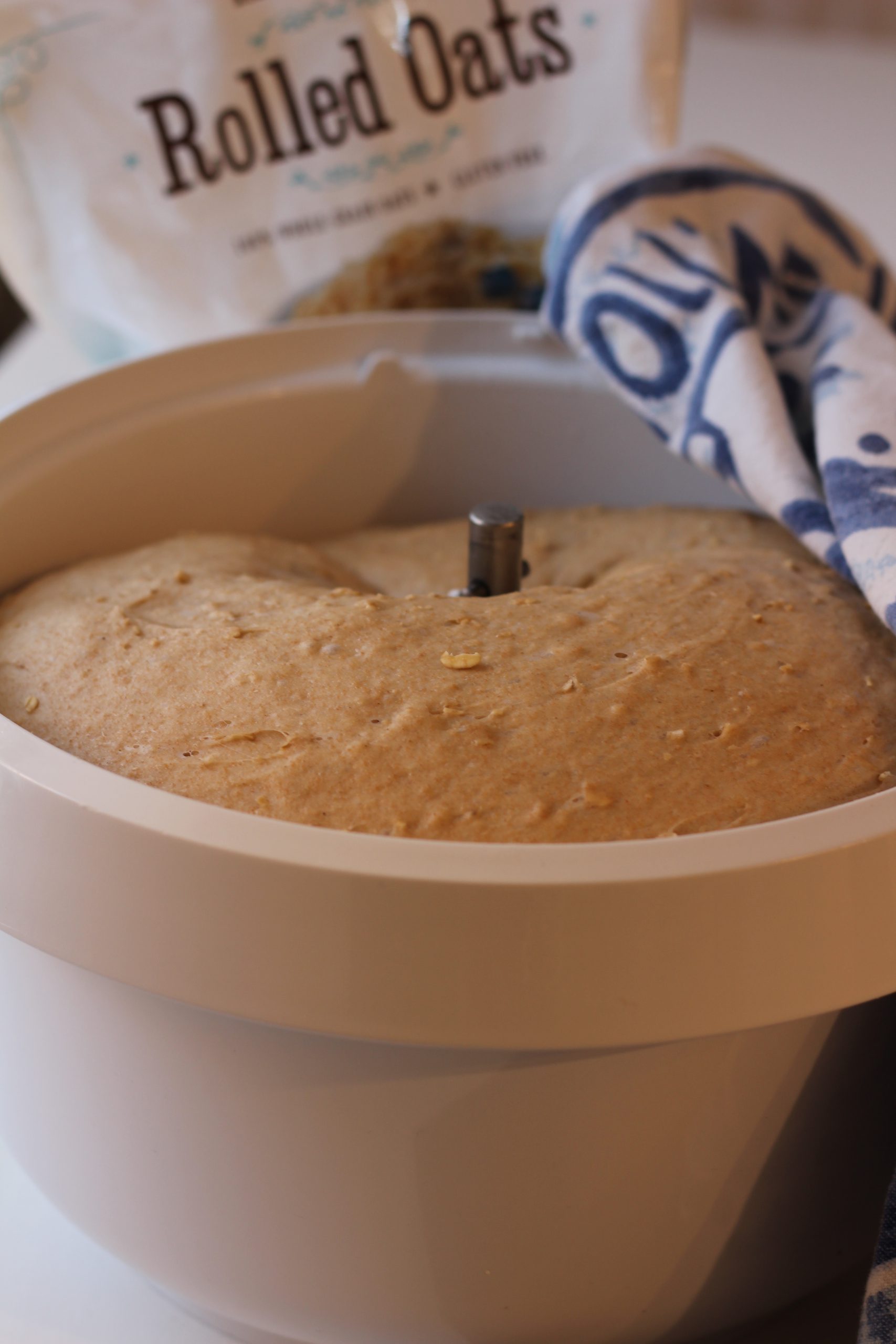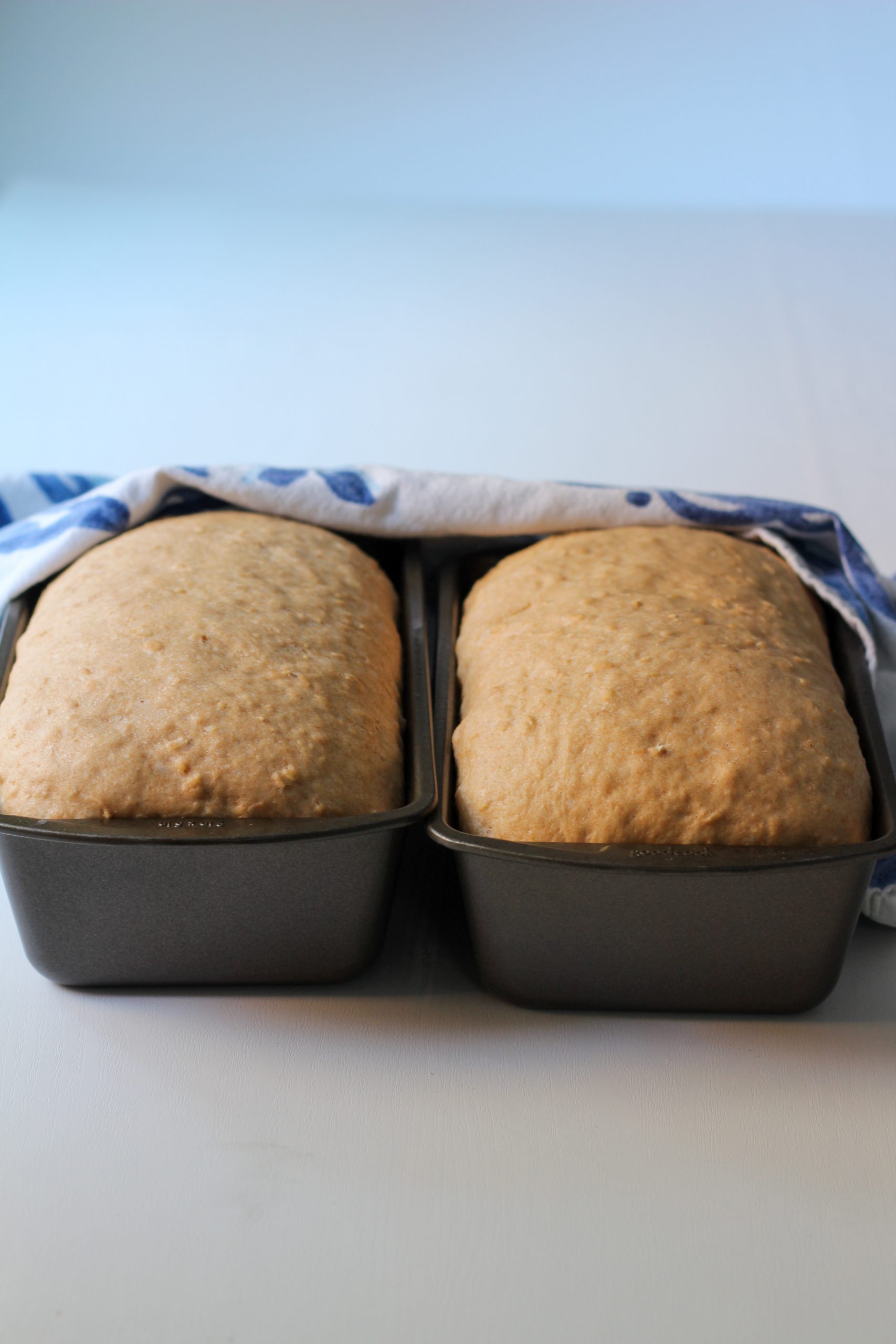
This super easy focaccia bread is delicious. Focaccia bread is the easiest bread you can make. The dough is similar to pizza dough but with lots of olive oil. The other ingredients are bread flour, yeast, honey and sea salt. The topping can be anything you enjoy. 
Most bread recipes require sugar to activate the yeast. As I’m not a fan of refined sugar, I always look for an appropriate replacement. In this case, I found raw honey adds a delicious flavor while being able to activate the yeast.
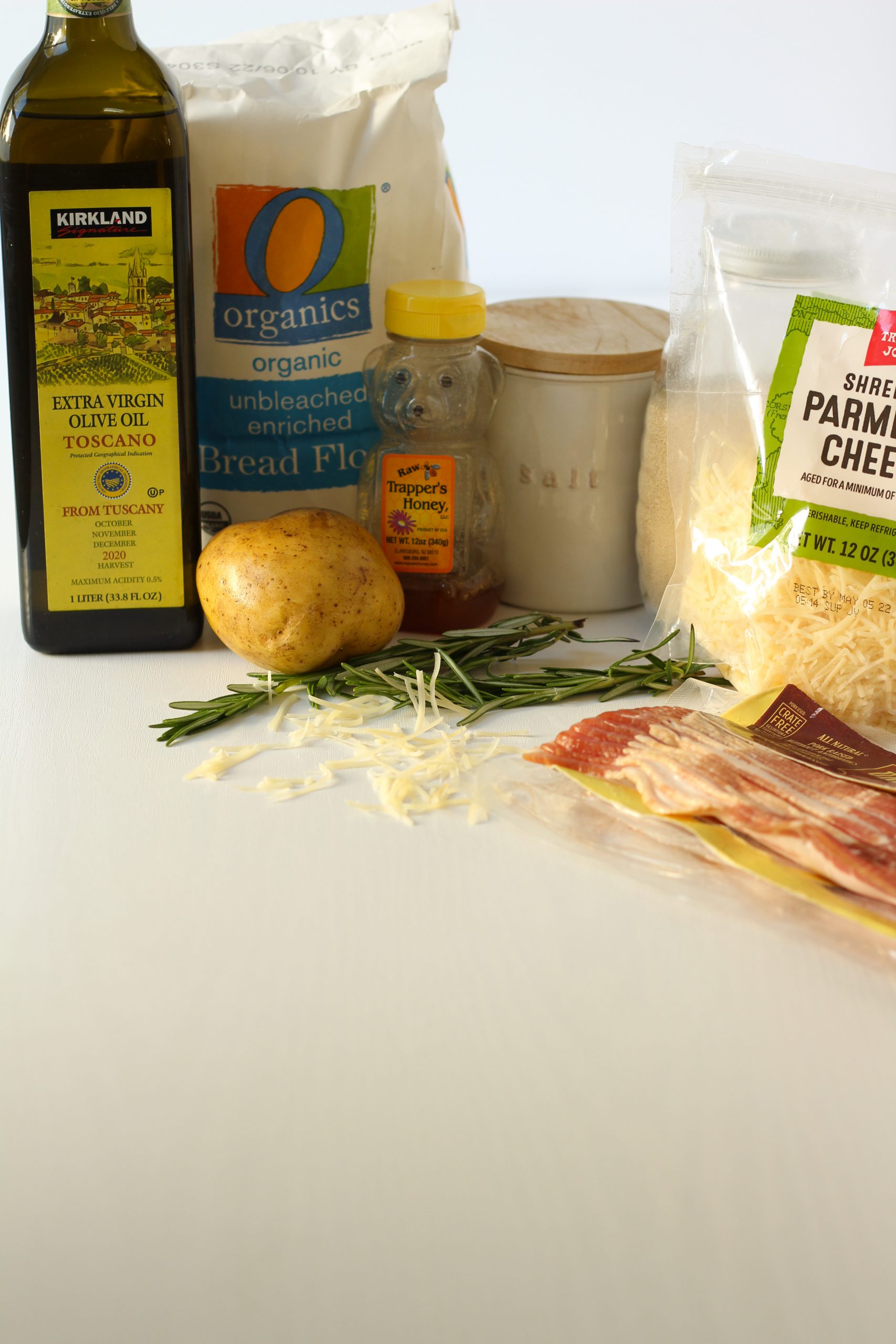
For the topping I experimented with potatoes, rosemary, bacon and Parmesan cheese.

To start begin by mixing the 1/4 cup of warm water with the yeast and honey. The water needs to be around 110 Fahrenheit to dissolve the yeast with the honey and to activate the yeast. It is important to let it stand until it is foamy and bubbly, around 5 minutes.

Here you can clearly see the foam and bubbles from the active dry yeast. It is ready to mix in with the flour and salt mixture after you can see the bubbles.
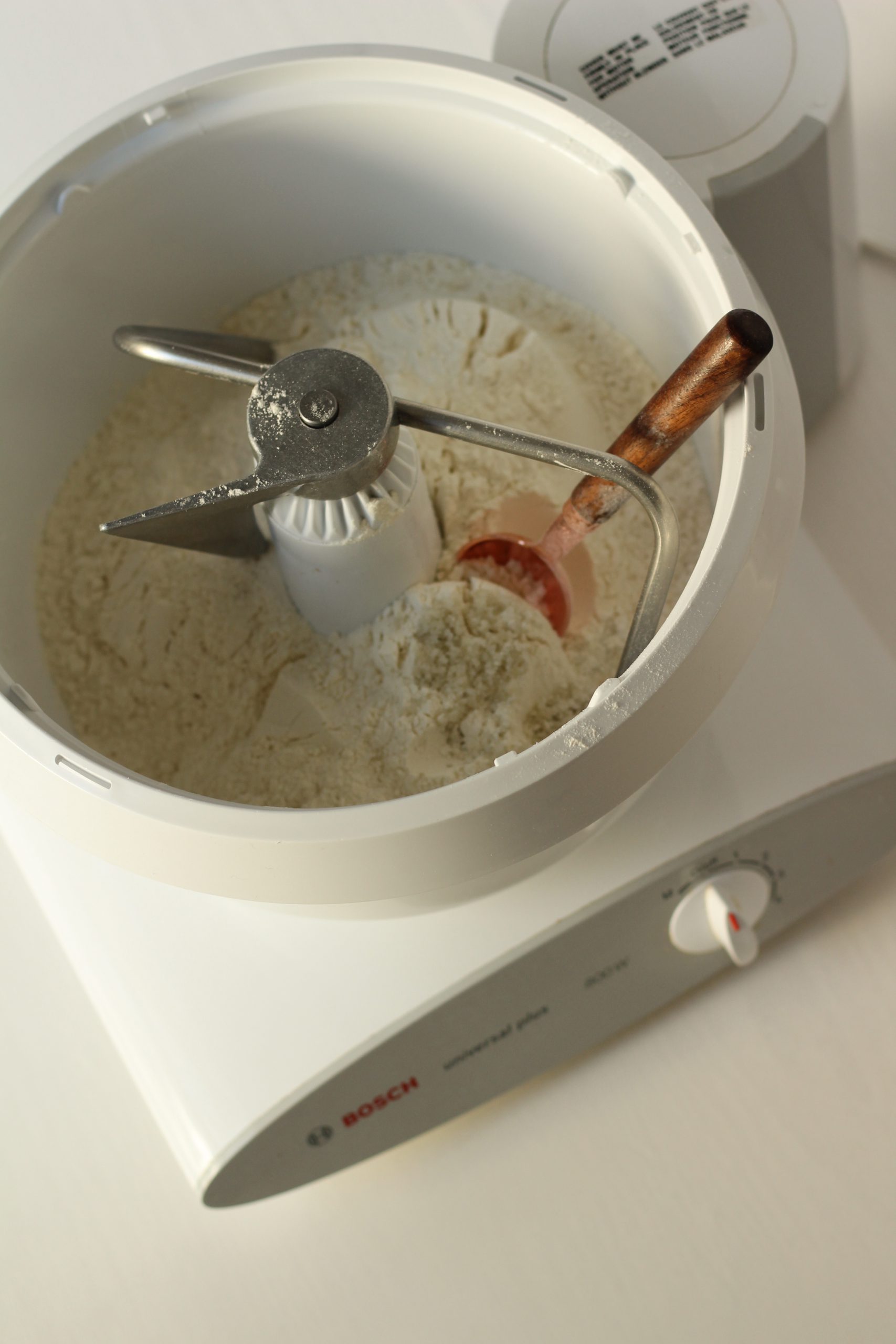
This recipe works best with a stand mixer and you will need to use the dough hook. My mixer https://www.boschmixers.com/product/bosch-universal-plus-mixer/ is Bosch, but any mixer with a dough hook will do.

When the dough comes away from the sides and is tacky, but doesn’t stick to your hands, it is ready. Grease a bowl with olive oil, and let it rest until it is doubled in size.
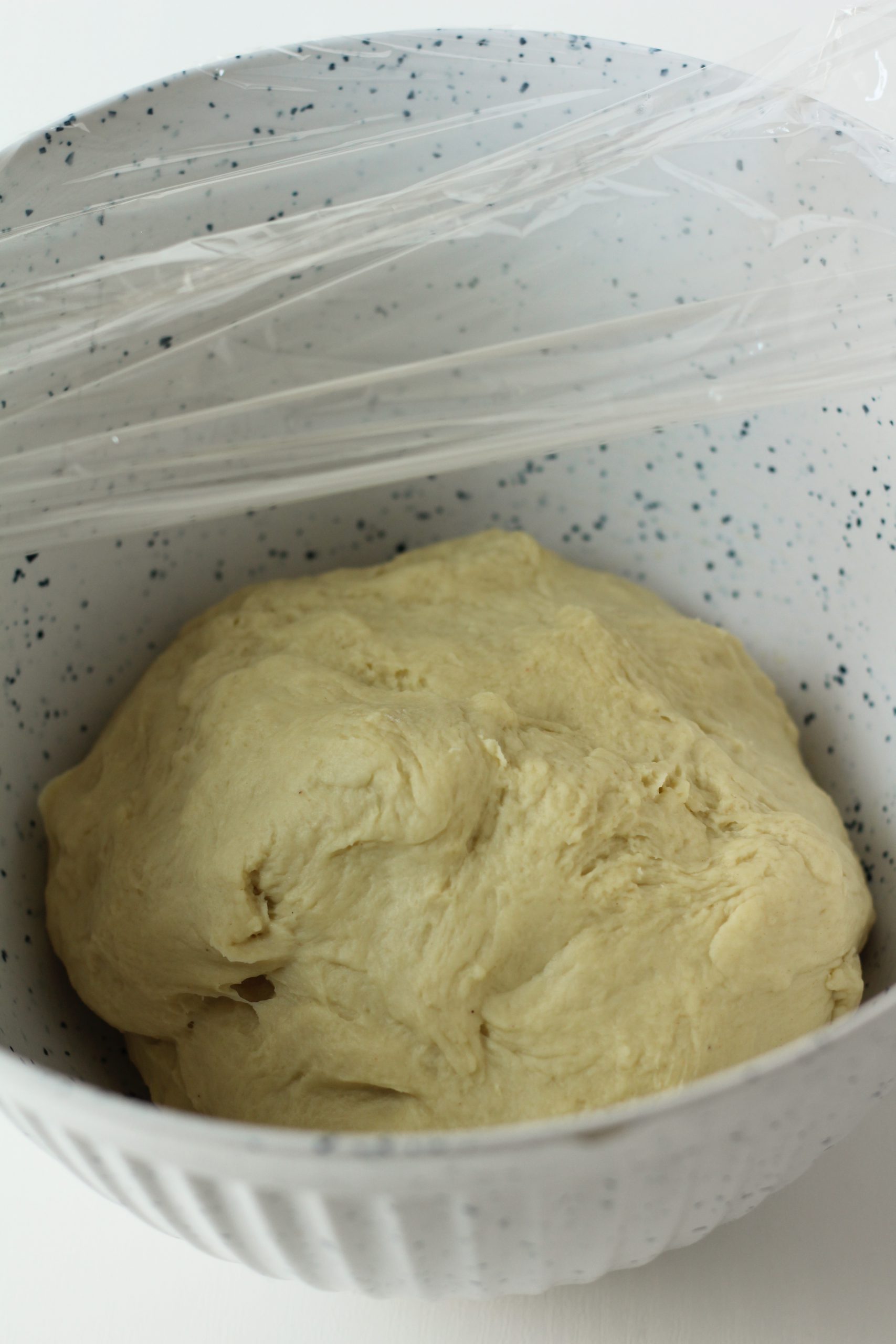 When the dough has doubled in size you are ready to place it on a greased baking sheet, and shape it into a rectangle. However, first you have to punch out the air in the dough.
When the dough has doubled in size you are ready to place it on a greased baking sheet, and shape it into a rectangle. However, first you have to punch out the air in the dough.
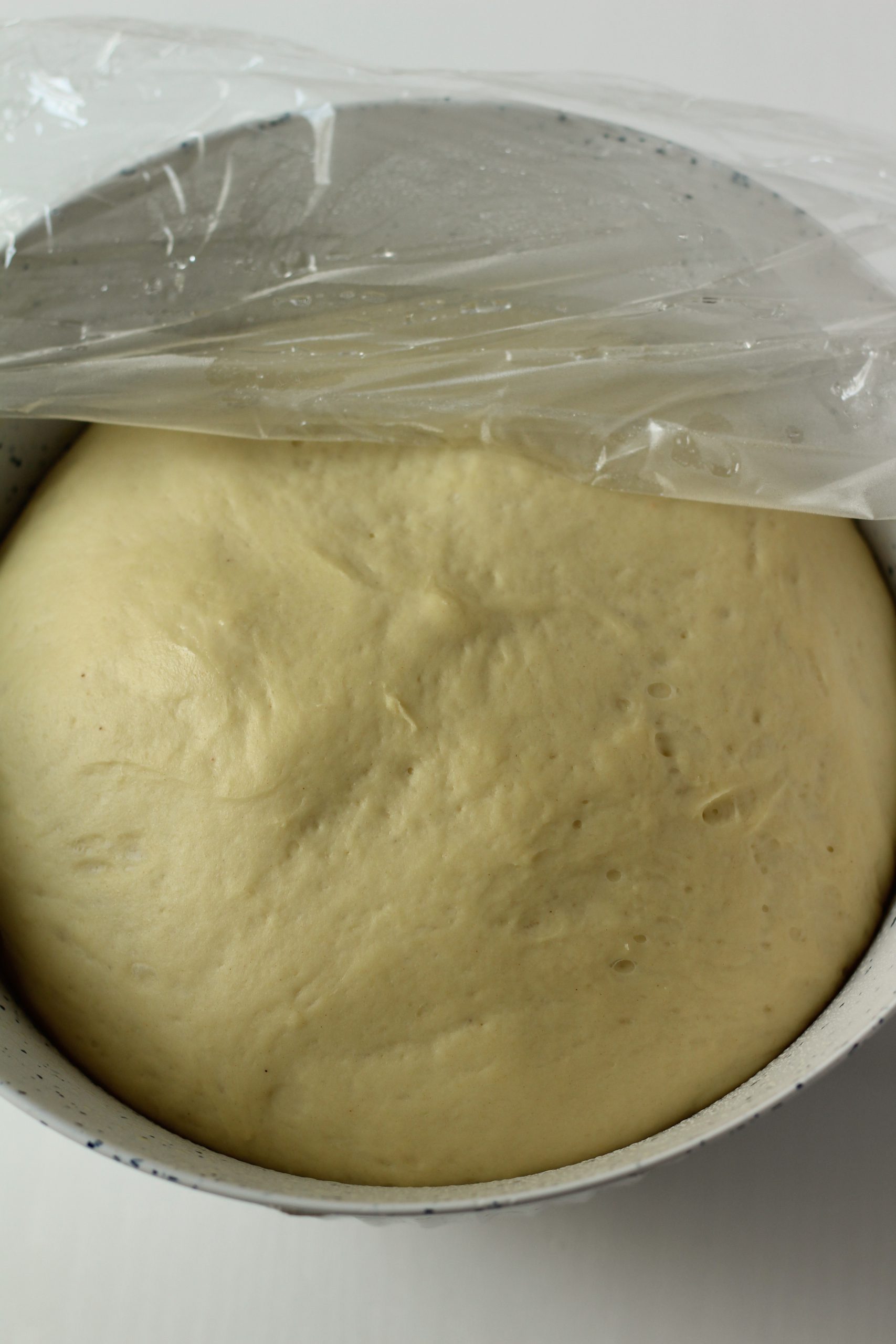
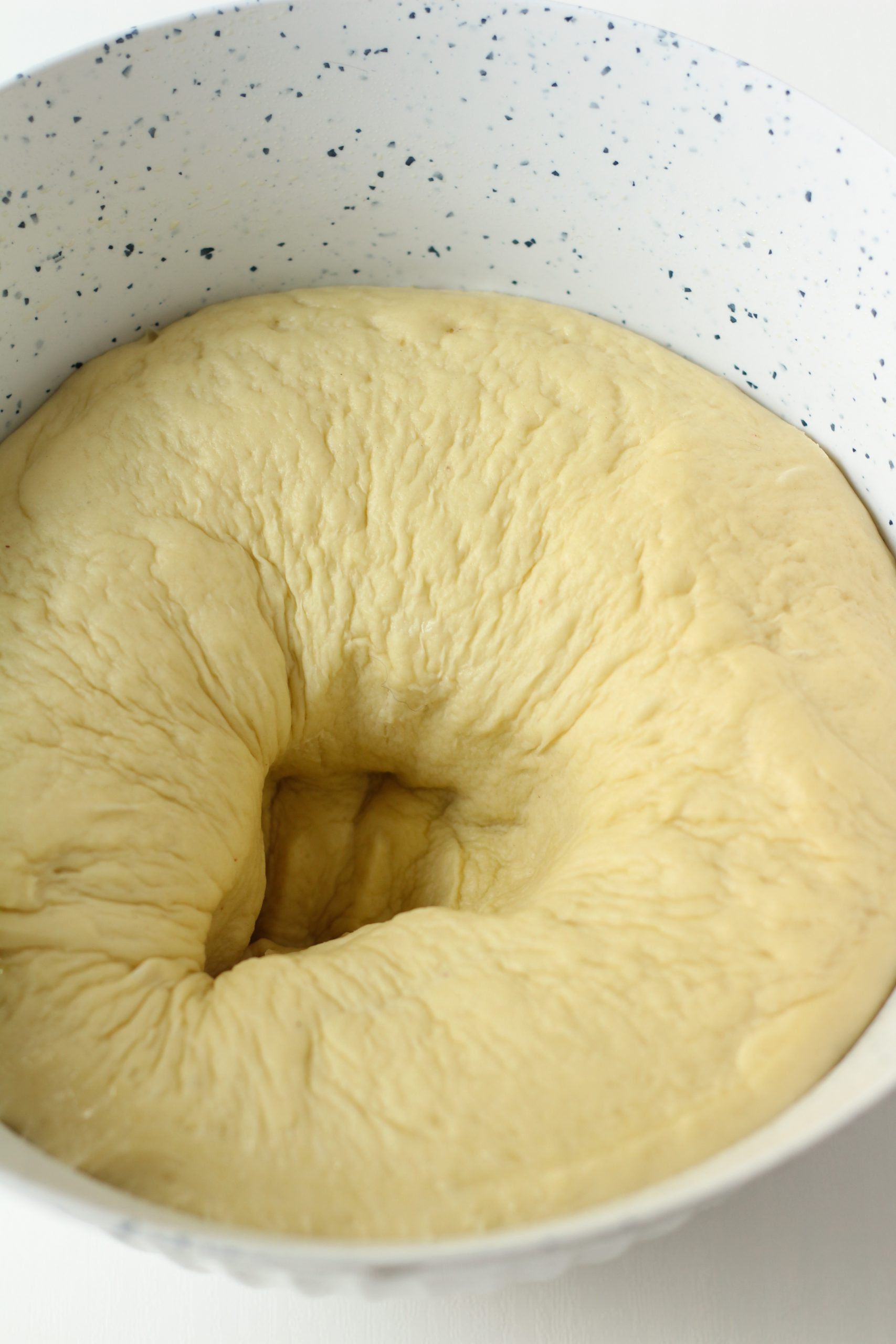
After the air is out you shape it into a rectangle on the baking sheet. I used parchment paper on the baking sheet to make it easier to transfer to a cooling rack later.


After you formed a rectangle with your dough, you cover it and place it in a warm area on your counter until it is doubled in size. This length of this rise will vary based on where you live and what season it is. It can take up to 1 hour or more if it is colder weather. It is important that you cover your dough and put it in a warm draft free area.
When it has doubled in size, you drizzle it with olive oil and make deep holes in the dough with your fingers. Don’t be shy! Dig them in far, until you feel the baking dish.
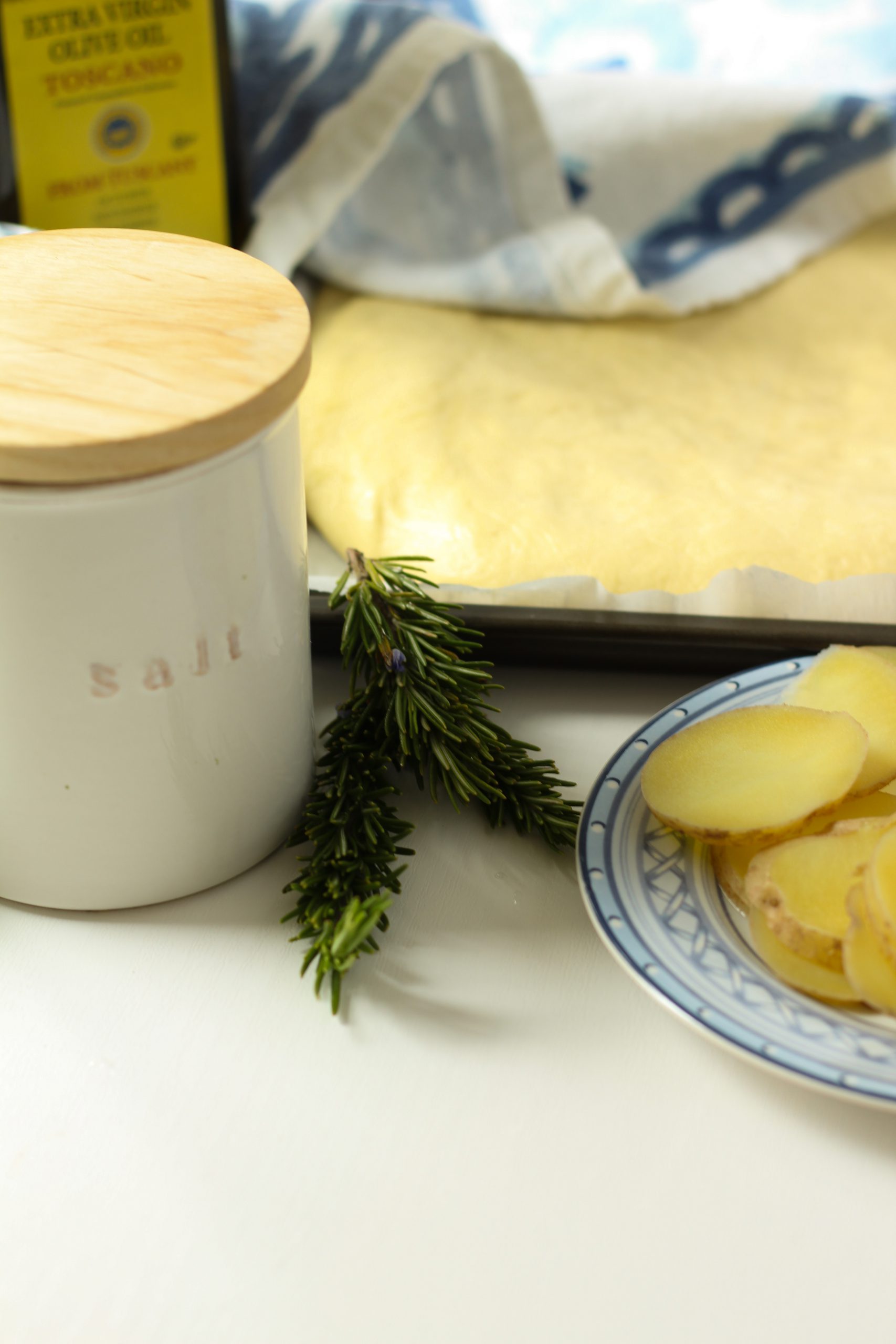

When you’re satisfied with the amount of holes, sprinkle the dough with sea salt (I used this French salt) and add your washed rosemary. You can bake it now, or add some extra toppings. I added potatoes, bacon and Parmesan cheese.
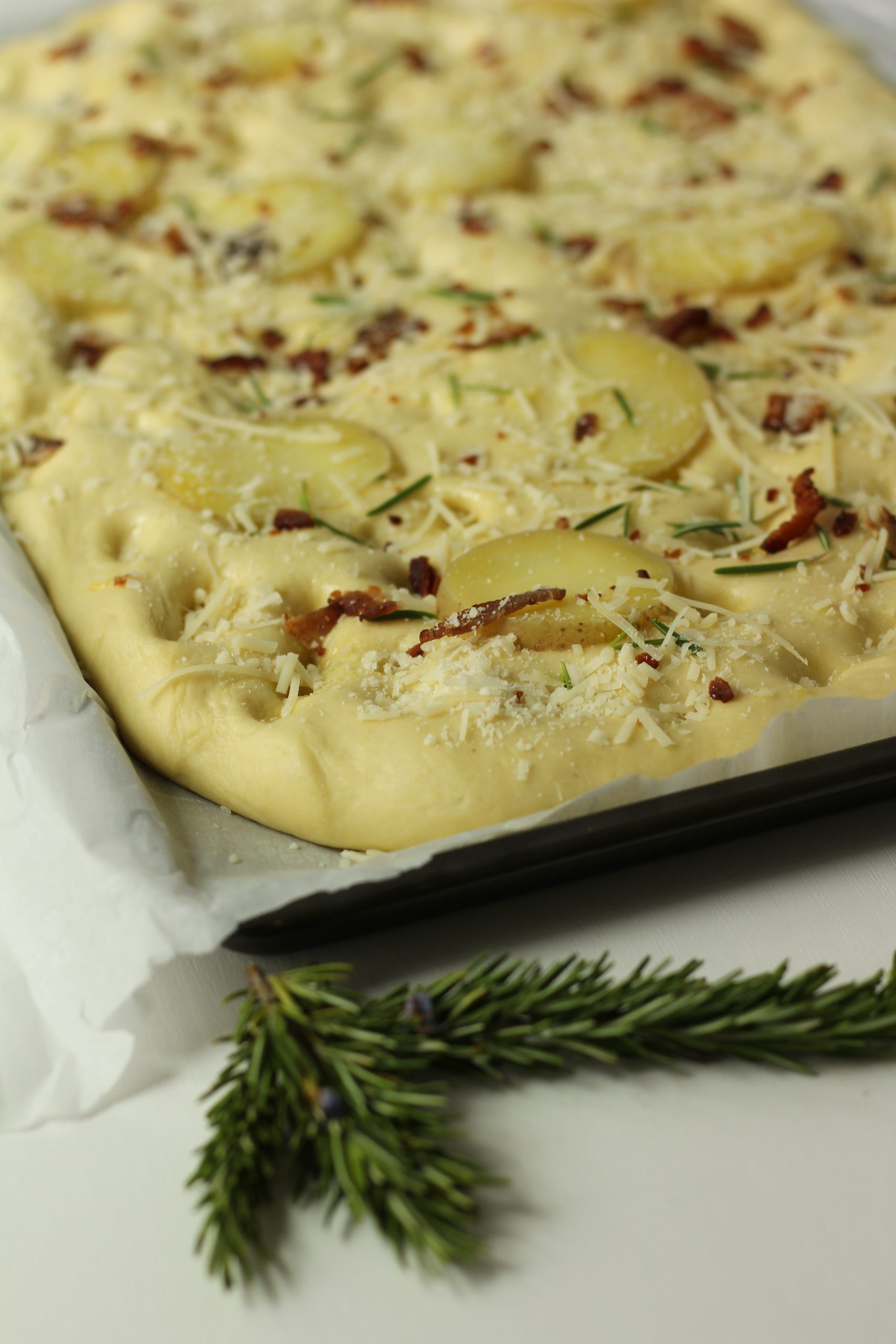
After adding the toppings, bake your dough in a preheated oven until it is golden brown. This can take around 20 minutes. Keep in mind that every oven is different, so the baking time may be more or less. Keep a close eye on the bread in the final baking minutes.

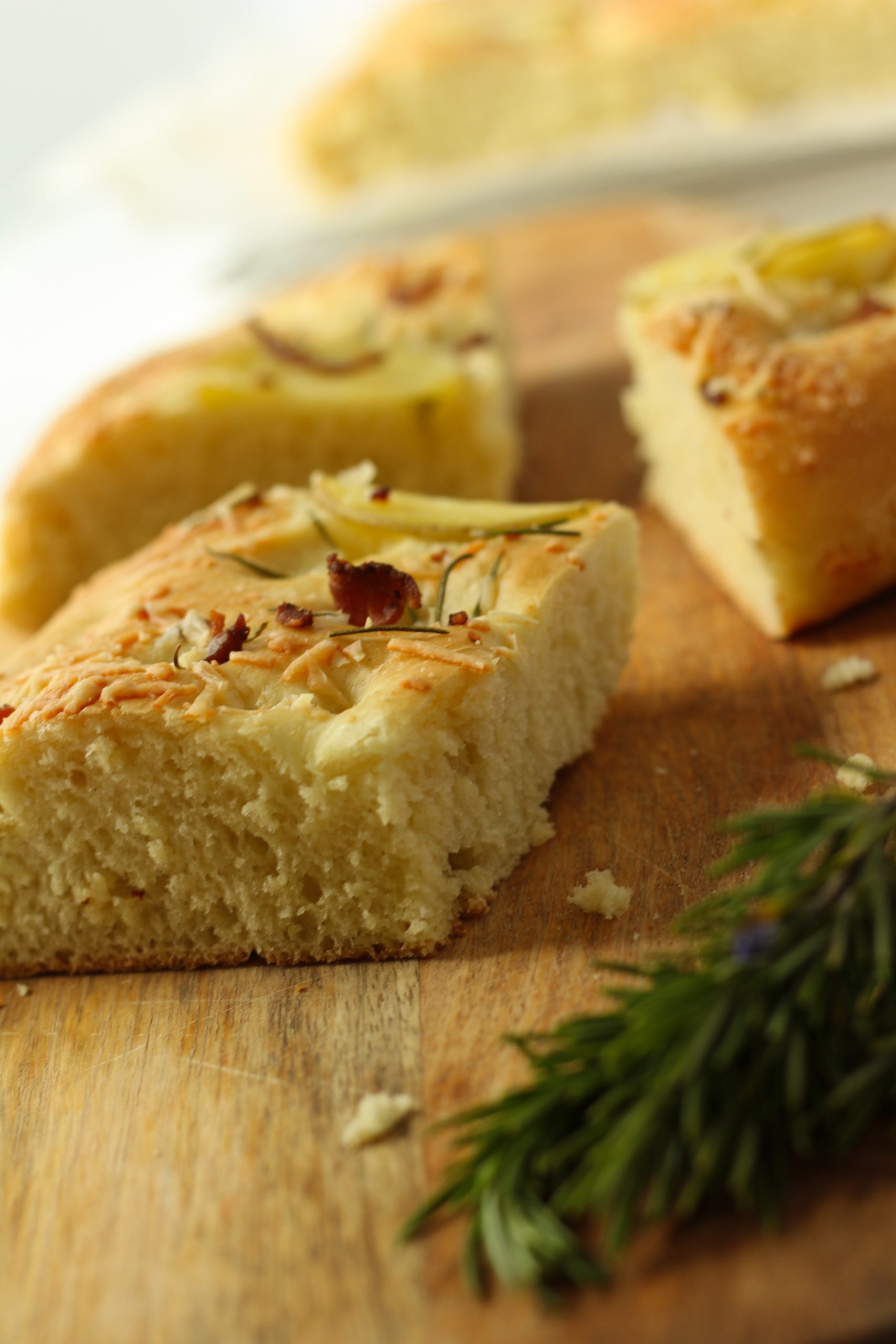
You can enjoy this light, airy and delicious Focaccia bread after it cools a bit on a cooling rack!
Focaccia Bread
Ingredients
Bread
- 1 3/4 Cups Warm water 95-100 Farhenheit
- 2 1/4 Teaspoons Active dry yeast
- 3 Teaspoons Raw honey
- 4 Cups Bread flour
- 1 Tablespoon Salt
- 1/2 Cup Olive oil extra for greasing the tin
Topping
- 3 Tablespoons Olive oil
- 1 Tablespoon Coarse sea salt
- 1 Tablespoon Fresh rosemary
Instructions
Bread
- In a small bowl combine 1/4 cup water, yeast and one teaspoon of honey. Stir and let it stand until it is foamy. This takes around 5 minutes.
- In the bowl of your mixer, with a dough hook, combine bread flour and salt. With the mixer on low slowly pour in the yeast mixture. When combined, add the rest of the honey, remaining water (1 1/2cup) and half a cup of the olive oil. Mix it on medium speed for 3-4 minutes.
- Grease a bowl with olive oil. Place the dough in the greased bowl. Cover and let it rest in a warm, draft free area until it is doubled in size. This takes around an hour.
- Drizzle 2 tablespoon of olive oil in a rimmed sheet pan that is about 17×13 inches.
- After the first rise, punch the dough down to release the air. Place the dough on the prepared sheet pan and shape the dough into a rectangle. The dough should be a 1/2 inch thick.
- Cover the dough with cling wrap and place it in a warm draft free area on your counter until it is doubled in size. This takes about 1 hour.
- Preheat your oven to 400 degrees Farhenheit.
- After the second rise, use your fingers to poke and create deep dents in the dough. Then drizzle with a tablespoon of olive oil and top with fresh rosemary and sea salt. You can bake it now or add extra toppings.
Topping
- Cook your bacon to a crisp and let them rest on a paper towel.
- Thinly slice your potatoes and grate your cheese. Add your extra toppings to the bread.
Baking.
- Bake the focaccia until it is slightly golden and cooked through. This takes around 20 minutes.
- Let it cool on the cooling rack.
If you’re looking for more bread ideas, check out this Irish soda bread on my blog.


